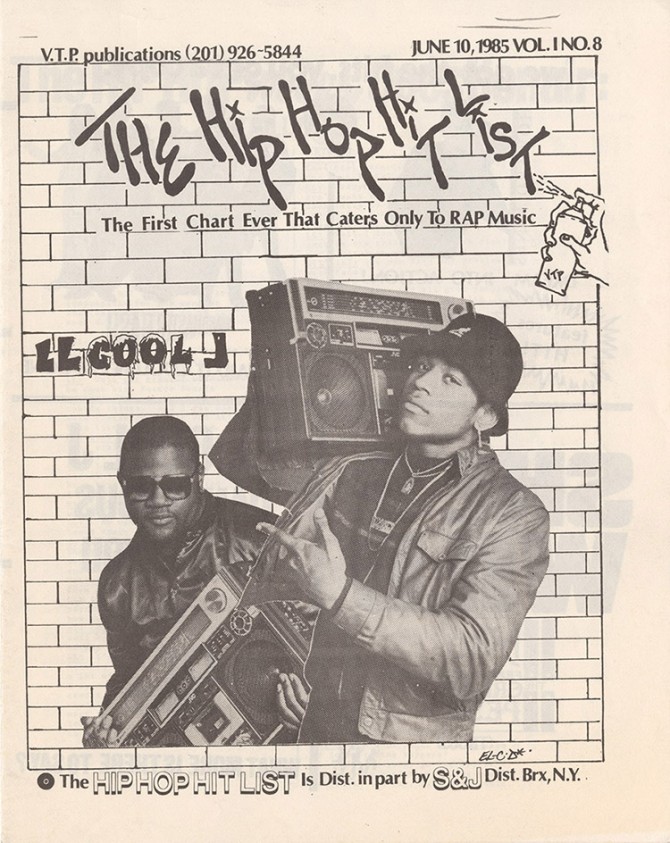Hip Hop Collection releases online trove on genre's rise
By Melanie Lefkowitz
Cornell University’s Hip Hop Collection is releasing hundreds of newly digitized images that tell the story of hip-hop’s explosion into the international mainstream and shed new light on some of its biggest stars, including LL Cool J, Queen Latifah and Public Enemy.
The digital collection of news clippings, photographs, press packets, correspondence and more are from the archive of music journalist and publicist Bill Adler. Adler worked with Rick Rubin and Russell Simmons at Def Jam Records from 1984 to 1990, when the label released groundbreaking work by the Beastie Boys, Public Enemy, Slick Rick, EPMD and 3rd Bass. Adler also worked for Rush Artist Management, which represented Kurtis Blow, Whodini, Eric B. & Rakim, Stetsasonic, Big Daddy Kane, DJ Jazzy Jeff & the Fresh Prince, De La Soul and others.
“Bill’s files are a rich and deep resource for the study of hip-hop’s emergence in the popular press and as a force within the music industry, and they enrich our understanding of hip-hop’s 40-year history,” said Katherine Reagan, Cornell’s curator of rare books and manuscripts.
The Cornell Hip Hop Collection, part of Cornell University Library’s Division of Rare and Manuscript Collections, received Adler’s archive in 2013. The newly digitized materials represent about 5 percent of the Adler archive, all of which is physically accessible to researchers on the Cornell Ithaca campus.
Adler started his collection in the 1970s, when there were few resources about hip-hop and no internet to consult. “But there was a tremendous explosion of writing about hip-hop in real time,” said Adler. Over the decades, his collection became an encyclopedic, one-of-a-kind archive tracing the growth of hip-hop culture.
“I’m thrilled to know that the collection is going to be made available to anyone with a keyboard and an internet connection, anywhere in the world,” Adler said.
The more than 1,700 items in this batch focus not only on LL Cool J, Queen Latifah and Public Enemy, but other artists such as Salt-N-Pepa and Eric B. & Rakim, all of whom emerged in the 1980s in New York City, where hip-hop culture was born.
The digitized material also chronicles hip-hop’s earliest acts and recording labels. For example, material about Sugar Hill Records includes a 1980 press biography about the Sugar Hill Gang and its smash 1979 hit “Rapper’s Delight,” widely credited with introducing hip-hop music to the world, as well as early label publicity on Grandmaster Flash and the Furious Five, who went on to become the first hip-hop artists inducted into the Rock and Roll Hall of Fame in 2007.
The collection also casts light on the artists’ individual paths to stardom. Items on Queen Latifah range from a 1990 story in Word Up! magazine about her confronting a bootleg tape seller at an in-store event to multiple versions of her 2006 advertising campaign for CoverGirl’s Queen Collection.
Over the next few years, Cornell University Library will digitize the remainder of the Adler Archive, creating an increasingly comprehensive digital resource on hip-hop’s history.
“The amount of material in the Adler archive is just staggering,” said Ben Ortiz, assistant curator of the Cornell Hip Hop Collection. “Not only will this stuff teach newcomers to the world of hip-hop culture more than they ever dreamed, but experienced devotees will find themselves completely immersed and adding much to their already deep knowledge.”
Melanie Lefkowitz is a writer for Cornell University Library.
Media Contact
Get Cornell news delivered right to your inbox.
Subscribe